Before the European invasion, led by the Spanish in the eighteenth century, Southern California Native Americans lived in small villages of up to 200 inhabitants. In general, California Indians have been classified as hunters and gatherers, meaning that they tended to obtain food from hunting and from gathering wild plants. Often evidence of agriculture—the deliberate planting and harvesting of foods—has been overlooked by non-Indian researchers.
The Luiseño were named by the Spanish after the Mission San Luis Rey de Francia which was established in their territory in 1798. The aboriginal name for the Luiseño is presently unknown. In her entry on the Luiseño in the Encyclopedia of North American Indians, Louise Jeffrado-Warden writes:
“Ecologically diverse, the territory of the Luiseños lay mostly in northern San Diego and southern Riverside counties, where more than one thousand years ago Luiseño bands founded villages with strictly delineated land and resource holdings. Only with precise permission could one group enter into another group’s domain to exploit specific properties such as gardens or groves.”
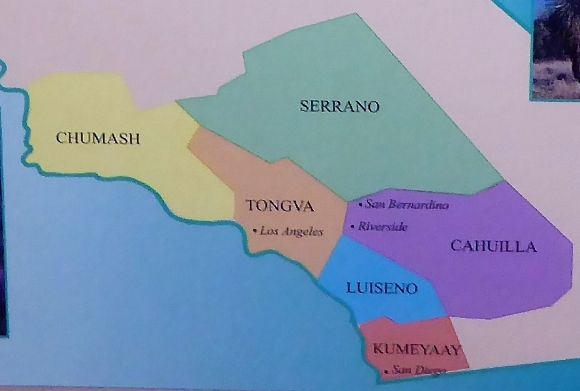 The map shown above shows Luiseño territory in relationship to other Southern California Indian nations.
The map shown above shows Luiseño territory in relationship to other Southern California Indian nations.
The Riverside Metropolitan Museum in Riverside, California has a diorama on Luiseño village life. According to the display:
“The Luiseño Indians live in a land of environmental diversity, from the beaches inland to the desert and mountains. This diorama portrays a village scene prior to 1798, when Mission San Luis Rey de Francia was established. Men are returning from a hunting trip carrying their bows, arrows, and rabbit sticks. Two other men are constructing a kicha, a home made of willow branches covered with willow boughs. One woman is cooking by dropping a hot stone into a basket full of food. Another woman is twining a basket.”
With regard to the bow and arrow, A.L. Kroeber, in his classic 1925 Handbook of the Indians of California, reports:
“The bow and arrow were of the usual southern California types: the one long, narrow, and unbacked, the other often of cane and generally foreshafted.”
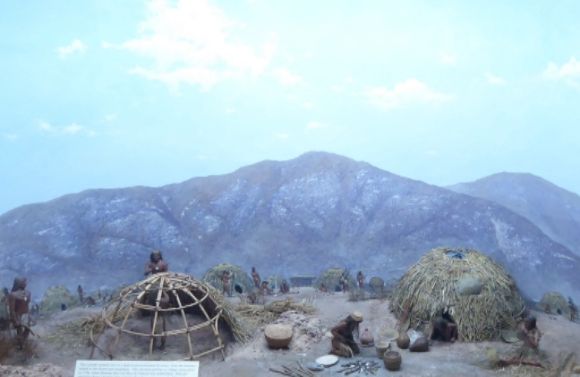
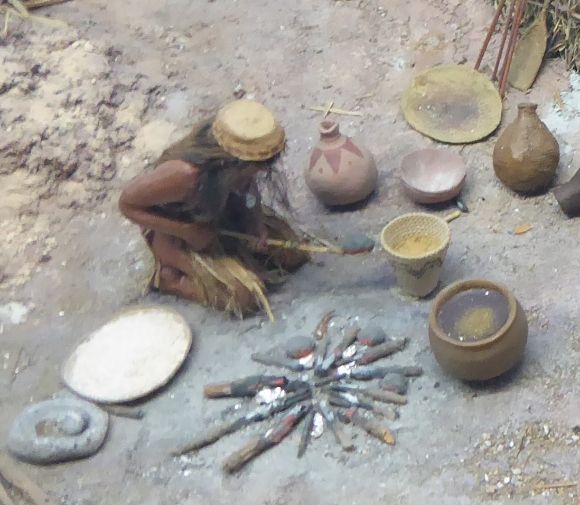 The scene above shows food preparation. Notice the stone mano and metate in the lower right which is used for making flour.
The scene above shows food preparation. Notice the stone mano and metate in the lower right which is used for making flour.  Basket making is shown above.
Basket making is shown above. 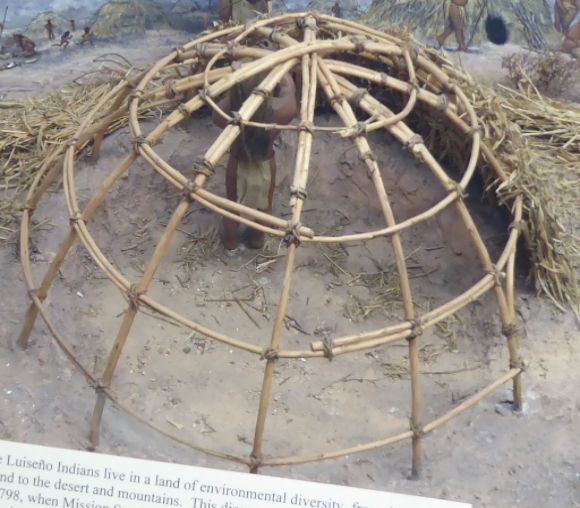 The frame of a kicha is shown above.
The frame of a kicha is shown above.  A completed kicha is shown above.
A completed kicha is shown above.
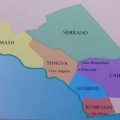
Leave a Reply